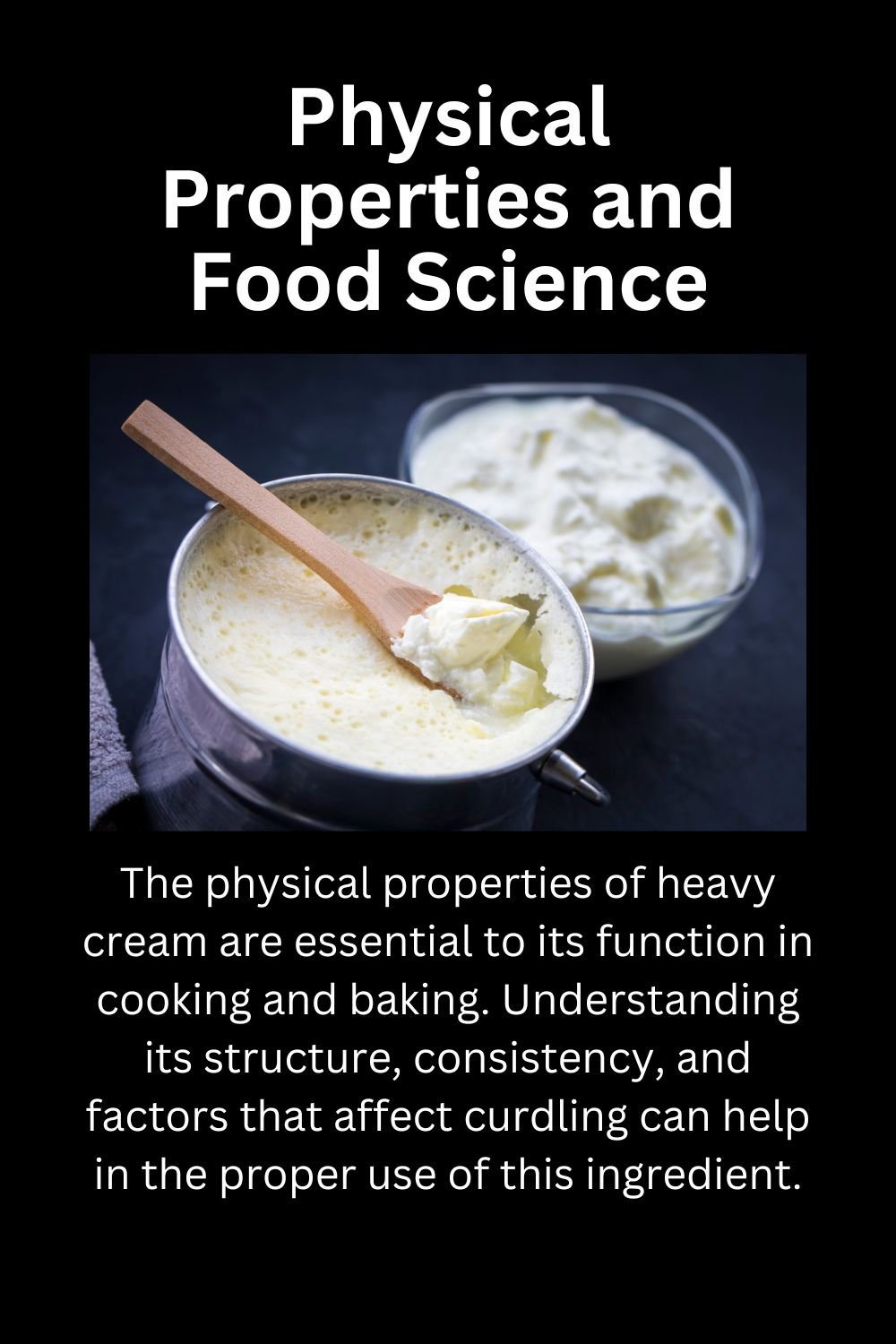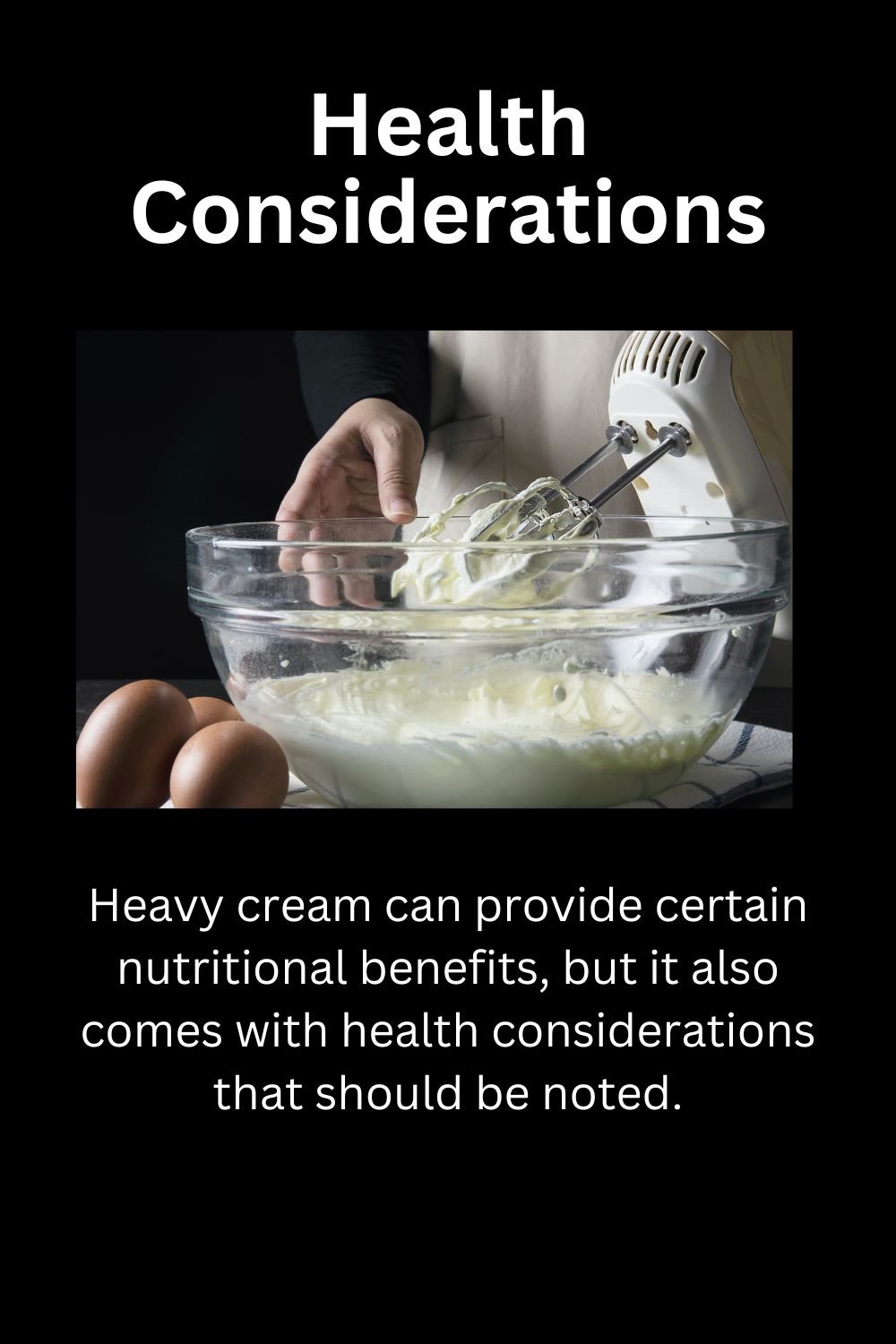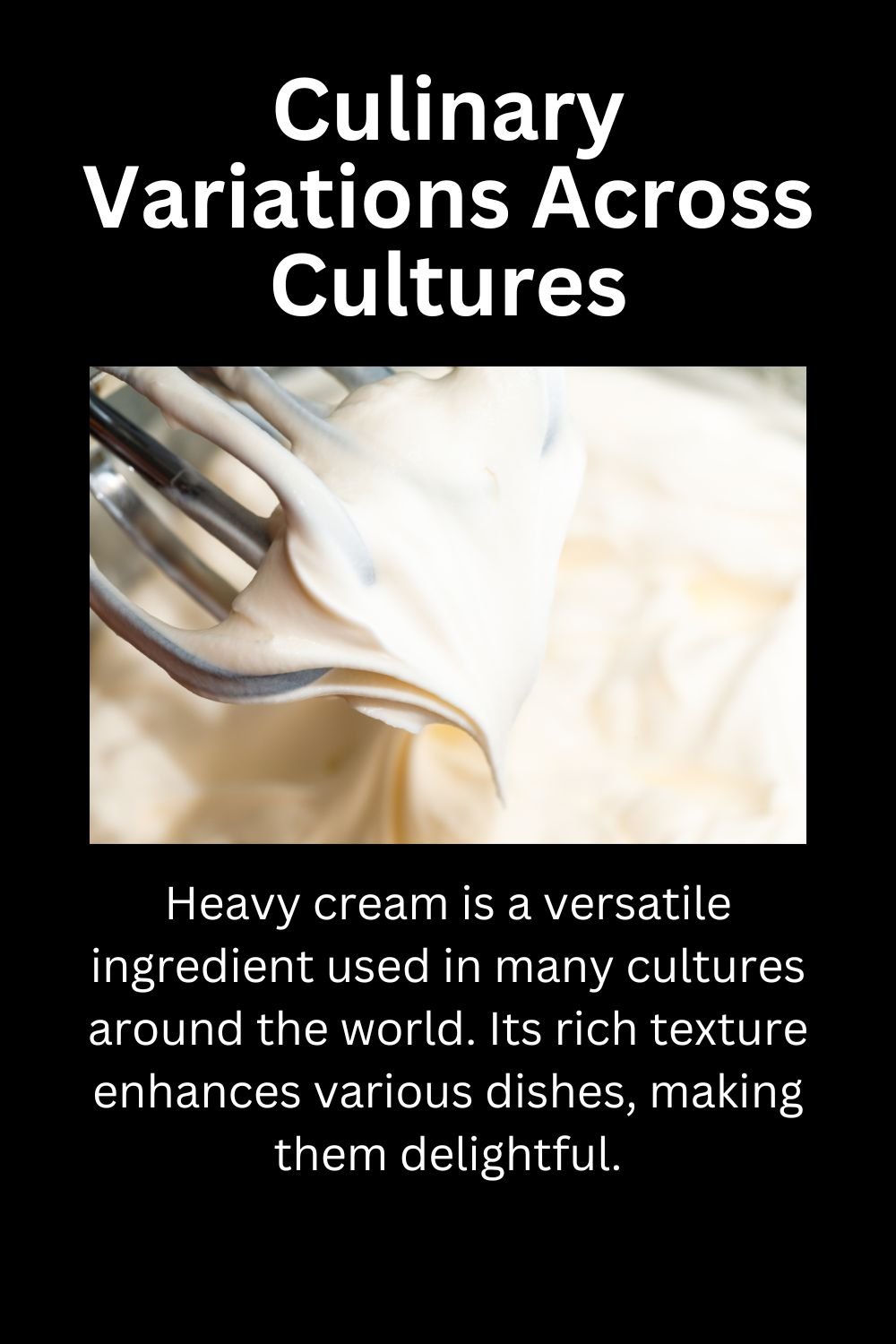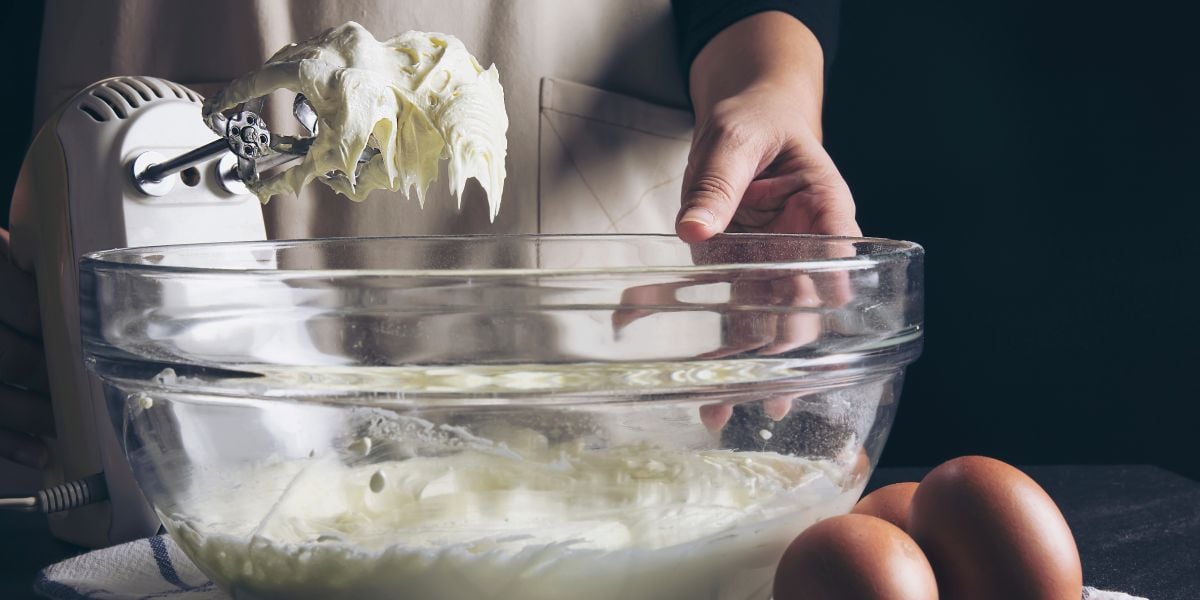Heavy cream is a staple ingredient in many kitchens, known for its rich texture and high fat content.
It contains at least 36% milk fat, making it ideal for whipping, baking, and cooking, thus enriching a variety of dishes.
From creamy sauces to delightful desserts, understanding what heavy cream is and how to use it can elevate culinary creations.
This versatile dairy product is not only popular in baked goods and sauces but also serves as a base for whipped cream and other delicious toppings.
The distinction between heavy cream and other dairy products, such as whipping cream or light cream, lies primarily in its fat content, which impacts both flavor and texture.
Exploring heavy cream’s nutritional profile and various culinary applications can help anyone appreciate its value in the kitchen.
Whether one is a seasoned chef or a beginner, knowing how heavy cream works can inspire creativity in cooking.
There are also alternatives for those with dietary restrictions, ensuring everyone can enjoy the creamy goodness this ingredient offers.
Key Takeaways
- Heavy cream has a high fat content, making it perfect for rich dishes.
- It differs from other creams in consistency and culinary uses.
- There are suitable substitutes for those who cannot consume dairy.
What Is Heavy Cream?

Heavy cream is a dairy product known for its rich texture and high fat content. It typically contains 36% to 40% milk fat. This high fat percentage is what makes it thicker and creamier than other dairy products.
Here are a few key characteristics of heavy cream:
- Richness: The high fat content adds a silky consistency to dishes.
- Stability: It is less prone to curdling compared to lighter creams, making it ideal for cooking.
- Versatility: Heavy cream can be used in both sweet and savory recipes.
In cooking, heavy cream is often used for:
- Whipped cream: It can be whipped into a fluffy topping for desserts.
- Sauces: Adds creaminess to pasta or soup.
- Ice cream: Essential for creating smooth, rich textures.
There are different types of cream with varying fat content:
| Type | Fat Content (%) |
|---|---|
| Heavy Cream | 36 – 40 |
| Whipping Cream | 30 – 35 |
| Light Cream | 18 – 20 |
| Half-and-Half | 10 – 12 |
Understanding these differences helps in choosing the right cream for any recipe.
Heavy cream’s high fat content not only contributes to its luxurious quality but also enhances flavor in many dishes.
Nutritional Profile

Heavy cream is known for its rich texture and high-fat content. It offers a unique combination of calories and fat while providing essential nutrients. The following sections outline its key nutritional components.
Calories and Fat
Heavy cream is energy-dense, making it a popular choice in cooking and baking. A standard serving of one cup contains about 809 calories.
- Fat content: This serving also consists of approximately 85.9 grams of fat, predominantly saturated fat.
- Saturated fat: A tablespoon of heavy cream (about 15 grams) has around 3.45 grams of saturated fat, contributing to approximately 17% of the recommended daily value.
As part of a balanced diet, it’s important to consume heavy cream in moderation due to its high-fat nature.
Protein and Carbohydrates
While heavy cream is mainly known for its fat content, it also provides some protein. A typical serving of heavy cream can contain approximately 6.8 grams of protein per cup.
- Carbohydrates: It is low in carbohydrates, offering about 0.4 grams per tablespoon.
- This means heavy cream contributes very little to daily carbohydrate intake, which should be around 130 grams for the average adult.
Due to its low carbohydrate content, heavy cream can be suitable for low-carb diets.
Vitamins and Minerals
Heavy cream contains several important fat-soluble vitamins. These include:
- Vitamin A: Essential for vision and immune function.
- Vitamin D: Important for bone health and calcium absorption.
- Vitamin E: Acts as an antioxidant.
In addition to vitamins, heavy cream has some sodium, though it is not typically high. However, those who are sensitive to sodium should monitor their intake.
It contains minimal lactose, making it more tolerable for some lactose-intolerant individuals compared to other dairy products.
Culinary Uses

Heavy cream is a versatile ingredient that enhances various dishes. It can add richness and a smooth texture to both savory and sweet recipes. Here are the primary culinary applications of heavy cream.
Cream-Based Sauces
Heavy cream is an essential ingredient for making cream-based sauces. It provides a rich flavor and velvety texture. Common uses include:
- Alfredo Sauce: Heavy cream combines with butter and Parmesan cheese for pasta dishes.
- Creamy Soups: Soups like clam chowder benefit from added cream for thickness and flavor.
- Sautéed Vegetables: Adding heavy cream to sautéed mushrooms creates a luxurious side dish.
When making a cream sauce, it’s crucial to cook it gently to prevent curdling. This ensures the final dish is smooth and enjoyable.
Desserts and Baking
In desserts and baking, heavy cream plays a critical role. Its high-fat content makes it ideal for whipping and creating various toppings. Key uses include:
- Whipped Cream: Heavy cream can be whipped to form a light, fluffy topping for cakes, pies, or ice cream.
- Custards and Puddings: Combining heavy cream in custards results in a rich, creamy dessert.
- Frosting: Heavy cream can be blended with chocolate or sugar to create a decadent frosting for cakes.
Using heavy cream in these recipes elevates the taste and texture, making desserts more indulgent.
Difference Between Heavy Cream and Other Dairy Products

Heavy cream differs significantly from other dairy products, primarily in its fat content and consistency. Understanding these distinctions can help in choosing the right ingredient for various recipes.
Half-and-Half and Light Cream
Half-and-half is a mixture of equal parts whole milk and cream. It contains about 12% fat, making it much lighter than heavy cream. It provides a creamy texture in coffee but does not whip well.
Light cream has a slightly higher fat content, typically around 20%. While it can add creaminess to soups and sauces, it lacks the richness and stability of heavy cream.
In contrast, heavy cream has at least 36% fat. This high fat content makes it ideal for whipping and creating whipped cream, as it holds its shape better than lighter creams.
Whipping Cream and Heavy Whipping Cream
Whipping cream contains about 35% fat, slightly less than heavy cream but still substantial enough for many culinary uses. It can be whipped into a stable foam, suitable for toppings and desserts, though it may not be as firm as that created from heavy cream.
Heavy whipping cream is very similar to heavy cream and contains between 36% and 40% fat. This makes it richer and more versatile than regular whipping cream. It whips up more quickly and holds its shape longer, making it preferred for whipped toppings and rich desserts.
Milk and Milk Substitutes
Whole milk typically contains around 3.25% fat. It is much thinner than heavy cream and is often used in cooking and baking but won’t provide the same richness as cream.
Milk substitutes, like coconut milk and Greek yogurt, offer different textures and flavors, often lower in fat.
Coconut milk has about 5% fat and is non-dairy. Greek yogurt is thicker and provides protein but lacks the creamy mouthfeel of heavy cream.
Heavy cream stands out due to its high fat content, making it unique among dairy products for certain culinary applications.
Physical Properties and Food Science

The physical properties of heavy cream are essential to its function in cooking and baking. Understanding its structure, consistency, and factors that affect curdling can help in the proper use of this ingredient.
Structure and Consistency
Heavy cream is a homogenized liquid that contains at least 36% milk fat. This high fat content gives it a rich, thick texture, making it ideal for whipping.
When whipped, it can achieve various states, such as:
- Soft peaks: The cream holds its shape but is still somewhat loose.
- Stiff peaks: The cream stands upright and holds its shape due to the air trapped within.
The air bubbles create a light and fluffy substance that is perfect for adding volume to desserts.
Additionally, stabilizers can help maintain this airy structure, preventing separation over time.
Curdling Factors
Curdling occurs when heavy cream’s proteins aggregate and clump together. Several factors influence this process:
- Temperature: Heating cream too quickly can cause curdling. Gentle heating is preferred.
- Acidic Ingredients: Adding acidic components like lemon juice or vinegar can trigger curdling.
- Over-whipping: Whipping cream beyond stiff peaks can lead to a grainy texture or butter formation.
To prevent curdling, it’s crucial to introduce acidic ingredients gradually or to avoid high temperatures while cooking.
Alternatives and Substitutes

There are many alternatives to heavy cream, catering to different dietary needs. Whether someone is looking for dairy-free options or ways to replicate heavy cream’s rich texture in cooking, these substitutes can be useful.
Dairy-Free and Vegan Options
For those avoiding dairy, several vegan substitutes can effectively replace heavy cream:
- Coconut Cream: This is a popular option. It is thick and creamy and can be whipped for desserts.
- Soy Milk with Oil: Mixing soy milk with a bit of oil can mimic the fat content. This mixture can be used in cooking without significantly changing the flavor.
- Almond Milk and Cornstarch: Combining almond milk with cornstarch can create a thicker consistency that works in sauces and soups.
These substitutes work well in various recipes, especially baked goods and sauces.
Heavy Cream Equivalents in Cooking
Some common substitutes can replace heavy cream directly in cooking:
- Half-and-Half: This mixture of milk and cream works well, especially in sauces and soups. To enhance its richness, add a dash of melted butter.
- Evaporated Milk: For a lighter option, evaporated milk is a good choice. It is less fatty but can still contribute creaminess to dishes.
- Cream Cheese: Thinned with a little milk, cream cheese can work in some recipes, providing both creaminess and flavor.
Practical Tips and Tricks

Knowing how to handle heavy cream can enhance culinary creations.
It is essential to understand proper whipping techniques and how to store heavy cream effectively to maintain its quality.
Whipping Techniques
When making whipped cream, there are a few key steps for best results:
- Chill Tools: Before starting, place mixing bowls and beaters in the refrigerator for about 15-30 minutes.
- Use Cold Cream: Heavy cream should be cold. The lower temperature helps create a stable emulsion and results in fluffier whipped cream.
- Beat Gradually: Start whipping on low speed and gradually increase to medium-high. This prevents splattering and helps the cream incorporate air slowly.
- Identify Soft Peaks: Stop whipping when soft peaks form. This means it is thick enough but still holds some shape.
- Be Cautious: Over-whipping can occur quickly, leading to a grainy texture. Stop as soon as it reaches the desired consistency.
Storage and Shelf Life
Proper storage is crucial to extending the life of heavy cream:
- Refrigerator: Store heavy cream in the coldest part of the refrigerator. The temperature should be below 40°F (4°C).
- Airtight Containers: Keep the cream in its original container or transfer it to an airtight container. This prevents absorption of strong odors from other foods.
- Check Expiration Date: Most heavy cream lasts about 1-3 weeks past the date on the label if stored properly.
- Freezing Options: Heavy cream can be frozen.
- Pour it into ice cube trays for small portions. Thawed cream may separate but can be re-whipped.
Health Considerations

Heavy cream can provide certain nutritional benefits, but it also comes with health considerations that should be noted.
Understanding its impact on heart health and potential dietary reactions can help individuals make informed choices.
Dietary Fats and Heart Health
Heavy cream is high in saturated fat, which can influence heart health.
Each half-cup serving contains about 43 grams of fat, with around 28 grams being saturated.
Studies suggest that high saturated fat intake may raise cholesterol levels. Elevated cholesterol can increase the risk of heart disease.
Experts recommend limiting saturated fat to less than 10% of daily calories.
Individuals with existing heart conditions should consult healthcare providers about incorporating heavy cream into their diets.
Balancing heavy cream with healthier fats, like those from avocados or olive oil, can be beneficial.
Lactose Intolerance and Allergies
Heavy cream contains lactose, a type of sugar found in milk.
People who are lactose intolerant may experience discomfort after consuming dairy products. Symptoms can include bloating, gas, and diarrhea.
In addition, some individuals may have a milk allergy, which can lead to serious reactions.
Individuals with these conditions should be cautious and consider alternatives, such as lactose-free cream or non-dairy options.
Always check labels for nutrition information to assess whether a product meets their dietary needs.
Culinary Variations Across Cultures

Heavy cream is a versatile ingredient used in many cultures around the world. Its rich texture enhances various dishes, making them delightful.
Key Dishes Featuring Heavy Cream:
- Crème Brûlée: A classic French dessert made with heavy cream, sugar, and eggs, topped with a caramelized sugar crust. Its silky texture is a highlight.
- Panna Cotta: An Italian favorite that translates to “cooked cream.” It’s made by mixing heavy cream with sugar and gelatin, resulting in a smooth, creamy dessert.
- Quiche: Originating from France, quiche combines eggs, cream, and fillings like cheese and vegetables in a pastry crust. Heavy cream provides a rich flavor.
- Biscuits and Scones: In the British tradition, heavy cream is often added to biscuit and scone recipes, giving them a soft and tender texture.
- Chowder: This thick soup, common in coastal regions of the United States, often uses heavy cream for its hearty consistency. Clam chowder, in particular, showcases the creaminess well.
Regulatory Standards and Food Safety
Heavy cream must meet specific regulatory standards set by the Food and Drug Administration (FDA). These standards ensure that the product is safe for consumption.
Key Standards Include:
- Milkfat Content: Heavy cream must contain at least 36% milkfat.
- Pasteurization: It must be pasteurized or ultra-pasteurized to kill harmful bacteria.
- Labeling: The label should clearly state “Heavy cream” or “Heavy whipping cream.” Any added flavorings must also be disclosed.
Food safety is critical in handling heavy cream. Here are some important points regarding storage and expiration:
- Storage: Heavy cream should be kept refrigerated at or below 40°F (4°C).
- Expiration: Always check the expiration date on the label. If it smells sour or has an off taste, it should not be consumed.
Frequently Asked Questions
Heavy cream is often a subject of curiosity in the kitchen. Many wonder about its differences from other creams, its uses, and substitutes. Below are answers to some common questions regarding heavy cream.
How does heavy cream differ from whipping cream?
Heavy cream and whipping cream are not the same. The main difference lies in their fat content:
- Heavy cream has at least 36% fat.
- Whipping cream contains about 30% fat.
This higher fat content in heavy cream contributes to its richer flavor and thicker texture.
What ingredients constitute heavy cream?
Heavy cream is primarily made from milk and cream.
For commercial heavy cream, milk is separated into cream. The result is a product that has a high fat content, ideal for whipping and cooking.
In what culinary scenarios is heavy cream typically used?
Heavy cream serves many purposes in cooking and baking:
- Whipping for toppings on desserts
- Sauces for pasta and meats
- Soups to add richness
- Puddings for creaminess
Its versatility makes it a staple in many kitchens.
Can another ingredient be used in place of heavy cream?
Yes, there are substitutes for heavy cream:
- Unsalted butter and milk can be mixed to create a substitute.
- Coconut cream works well for dairy-free options.
- Greek yogurt can add creaminess in some dishes.
These alternatives can mimic the richness of heavy cream in various recipes.
What is the best way to find heavy cream in a grocery store?
In a grocery store, heavy cream is typically found in the dairy section. It is usually packaged in:
- Pint or quart cartons
- Plastic containers
Always check the label to ensure it says “heavy cream” for the right product.
Is there a distinction between heavy cream and cooking cream?
Yes, there is a difference.
Cooking cream generally has a lower fat content than heavy cream. It may contain added ingredients for stabilization, making it suitable for specific cooking applications but not for whipping.
Heavy cream retains a richer, thicker quality.
